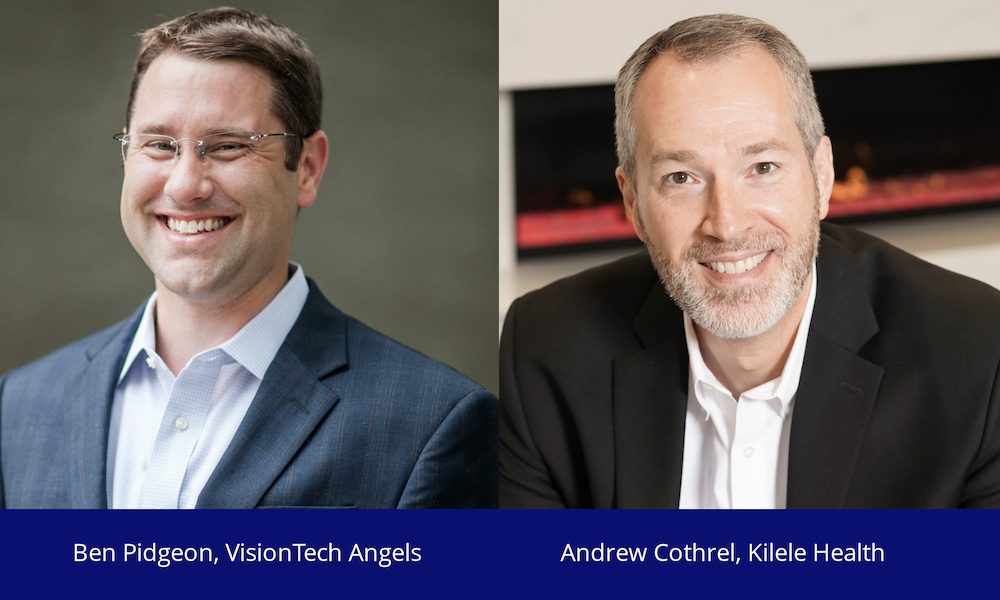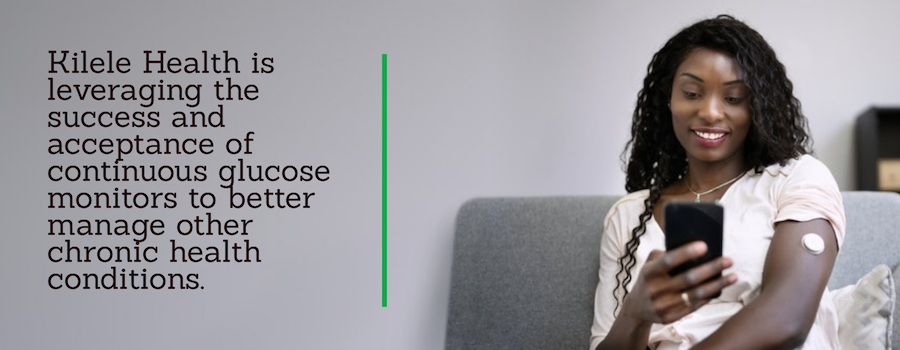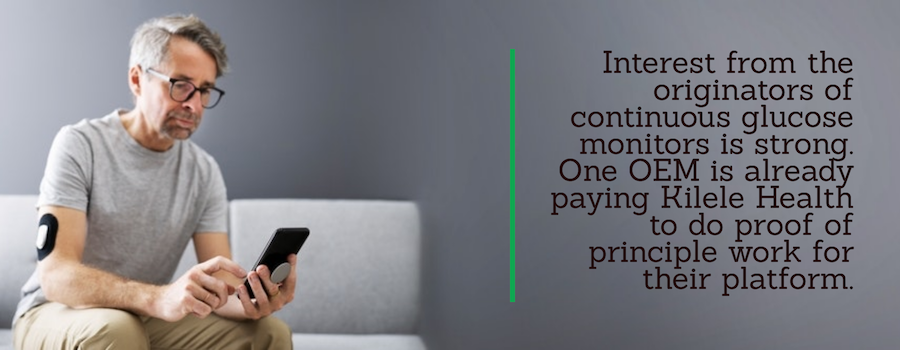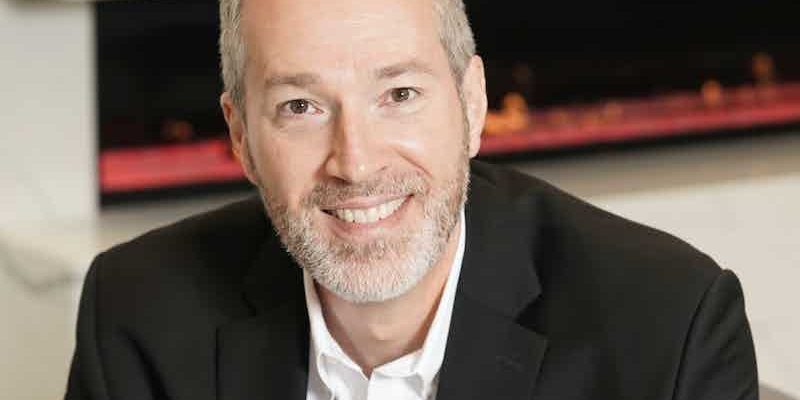Here’s an interesting fact: Andrew Cothrel, CEO of Kilele Health, has been involved with VisionTech longer than I have. In fact, he goes back to the Stepstone days! In addition to being a VisionTech member/investor, Andrew serves on the board of portfolio company Scioto Biosciences and is the former CEO of SonarMed, another portfolio company that successfully exited in 2020. Having a deep background in the medtech industry bringing new products to market has made Andrew an excellent CEO of early-stage medical device and diagnostics companies. When he recently presented Kilele Health to the VisionTech Screening Committee, we were impressed and invited him to present at our September virtual pitch events. Here’s a preview.

BP: Where did the name Kilele Health come from?
AC: Kilele is Swahili for mountain peak. It reflects our vision of helping patients achieve peak health through improved management of their chronic diseases.
BP: Tell me about Kilele Health and unmet need you’re addressing.
AC: The science is complex, but our story is simple. The prevalence of chronic disease in America and around the world is bad and getting worse. By chronic diseases I am referring to conditions like diabetes, hypertension, heart disease, respiratory diseases, stroke, cancer, and obesity. Many of these conditions are intertwined. People with diabetes are also likely to suffer from heart disease. Chronic diseases are very difficult to manage. And from a healthcare payer perspective, the slope of the chronic disease cost curve has to bend, or it will bankrupt us.
There is already one success story in this space – continuous glucose monitors (CGMs). Patients and physicians now have a way to continuously monitor blood glucose levels and ultimately, better manage diabetes. Today, there are 5.5 million users of CGMs, representing a $5 billion plus market.
What Kilele Health is doing is following the proven path of continuous glucose monitors but enhancing them to measure other things via Aptamer biosensing. This allows us to leverage the hundreds of millions of dollars that have gone into establishing CGM systems, but the device is now set up to detect other biomarkers or drugs specific to a patient’s chronic diseases and provide real-time monitoring. For example, our CGM+ can monitor drugs or biomarkers related to blood coagulation or congestive heart failure. Having this information allows patients to monitor their condition, make better behavioral choices and better comply with medication regimens. If they notice something wrong, they can contact their doctor. This replaces or reduces the need for in-person appointments to monitor and manage their condition.

Given how physicians and patients have embraced CGMs, we believe adoption of our CGM+ will have some tailwinds. We also know that the original equipment manufacturers of CGMs are all very interested in adding additional biosensing to their devices. That’s where Kilele Health’s Phase I commercialization plan comes in.
BP: Explain aptamer chemistry. I had not heard that term before.
AC: Aptamers have been around a long time. They are nucleic acid sequences like DNA or RNA. They are great for binding a specific target molecule. Historically, the problem has been they just don’t last. That is the “big deal” that Kilele has solved; our aptamer biosensors last a very long time.
BP: What are your competitive advantages?
AC: We have several competitive advantages over traditional chronic disease management. The need for patients to physically go to their doctor’s office, which delays treatment, is costly and inconvenient, goes way down. Physicians get better data that is better managed, and probably get more compliant patients as well. Payers win because long-term costs of disease management should go down. And nobody drowns in data. Our algorithms will identify events that are noteworthy of physician attention.
In terms of advantages over competitors, I mentioned the longevity of our biosensors. Nobody else that we are aware of is even coming close to doing what we have. The other significant advantage is that we’re not reinventing the wheel. We are leveraging the existing CGM platforms and hope to partner with these OEMs to accelerate time to market as well as speed of adoption based on the positive goodwill of physicians and patients toward CGMs.
BP: What kind of intellectual property do you have?
AC: The University of Cincinnati has a suite of more than 30 pending patents on the technology with more coming. Kilele Health has exclusive rights to license this patent protection. We want to build a tall fence around Kilele Health and plan to add our own patents going forward.
BP: What is your total addressable market?
AC: Any market over a billion is big, and the market for our technology is significant. We believe our Phase 1 market, which is our CGM+ for people with diabetic comorbidities, represents a $5 billion opportunity. Phase 2, which is using those same assays for non-diabetics, may represent $10 billion. Phase 3, which is new medical indications, is at least another $5 billion opportunity.

BP: What is your revenue model?
AC: Phase 1 is very likely to be licensing to one or more current CGM OEMs. After that, it’s hard to know exactly. However, by Phase 3, I would anticipate that we will have built our own wearable monitoring system hardware and software
BP: Where are you in terms of commercialization?
AC: We are early stage, finalizing our tech and prepared for animal studies leading to human testing and FDA clearance. Our first product is aimed at cardiac comorbidities. Many diabetics have cardiovascular issues, so that’s a natural initial target. That said, we plan to develop multiple sensors in overlapping but staggered tracks. We will be partnering with CGM original equipment manufacturers on development. Already there is strong interest in what we’re doing with aptamers and our CGM+. One OEM is already paying us to do some proof of principle work for their platform.
BP: This is a $2.25M Series Seed Round. What is your planned use of funds?
AC: Our use of funds is straightforward. First, we plan to expand team and prove a biosensor life of one week in an animal model. We will be focused on developing aptamers for our top three to five targets. We will also work toward scheduling a pre-submission meeting with the FDA to nail down our clearance submission requirements
BP: Three reasons why VisionTech Angels should invest in Kilele Health.
AC: First, our team. Internally, we have global leaders in aptamer biosensors, experienced medtech entrepreneurs, and individuals who have worked directly with potential partners and acquirers. Our external clinical advisors are also excellent.
I’m a known quantity to VisionTech Angels and will be transparent with our investors. Second, we have identified a hole in the portfolios of the three makers of continuous glucose monitors, Abbott, Dexcom and Medtronic. They are all interested in adding new capabilities to their platforms. We are positioned to provide that to them. Lastly, our commercialization pathway will be very capital efficient and hopefully take us to a quick/high IRR exit.

VisionTech Angels’ September Pitch Events will be virtual on Thursday, September 29 at Noon ET and at 6 p.m. ET. Pitch events are open to our members and accredited investors interested in joining our group. To register, check your email for an invitation, go to our Events page where you’ll find the RSVP links, or email Ben Pidgeon at bpidgeon@visiontech-partners.com.
